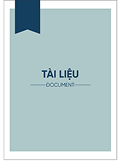Item
Multidimensional Poverty among Households in Southwest Nigeria

Abstracts views
156
Views & Download
4
Abstract
Money metrics have been adopted in studies of household poverty in Nigeria while few have considered alternative methods. This study analysed poverty among households in southwest Nigeria adopting a “Multidimensional Approach”. This is necessary for robust and effctive policy. Data were collected from 355 randomly selected households. Alkire-Foster’s methodology was used to assess households’ poverty and this was further decomposed. The majority of the households lacked improved toilet facilities, sanitation, improved drinking water, nearness to healthcare centres and primary schools, while most households engaged in self-medication. About 7.9 percent were deprived in all the eleven indicators considered. The Multidimensional Headcount Ratio (H) when cut-of (k) was set at 1/3 revealed that 69% of the households were poor and its Intensity (A) was 65% while the Multidimensional Poverty Index (MPI), which is the Adjusted Head Count Ratio (M0) revealed that an average household in the area was deprived of 45% of the total potential deprivations it could experience. Decomposition by socioeconomic characteristics revealed that the poverty rate was higher among female-headed households. The same applied to households headed by divorced individuals, younger persons, farmers, less educated individuals and larger households. When k=2/3, 44.2 percent of the households were classifid as poor with an “A” value of 0.416 and the MPI being 0.184. At k=1 the percentage of poor households reduced signifiantly to 7.9 percent with an intensity value of 0.074 and MPI of 0.006. It is recommended that government should improve access to education, health care and enforce various sanitation laws to improve households’ hygiene. Policies should also be geared towards empowering households in order to escape poverty
Description
World economy and international economic relations
Authors
Sakiru Oladele Akinbode
Folake Elizabeth Ojediran
Advisor
Place of publication
Publisher
Kinh Tế Quốc Dân
Date
2018
ISBN
1911-0020
ISSN
Keywords
Poverty , deprivation , households , multidimensional approach , Nigeria
Citation
Collections
Files

Article 3_JED_Vol 20_Number 1.pdf
D:\NEU_DSpace\tapchitienganh
Size: 551.59 KBFormat: pdf
Views: 0 Downloads: 4
